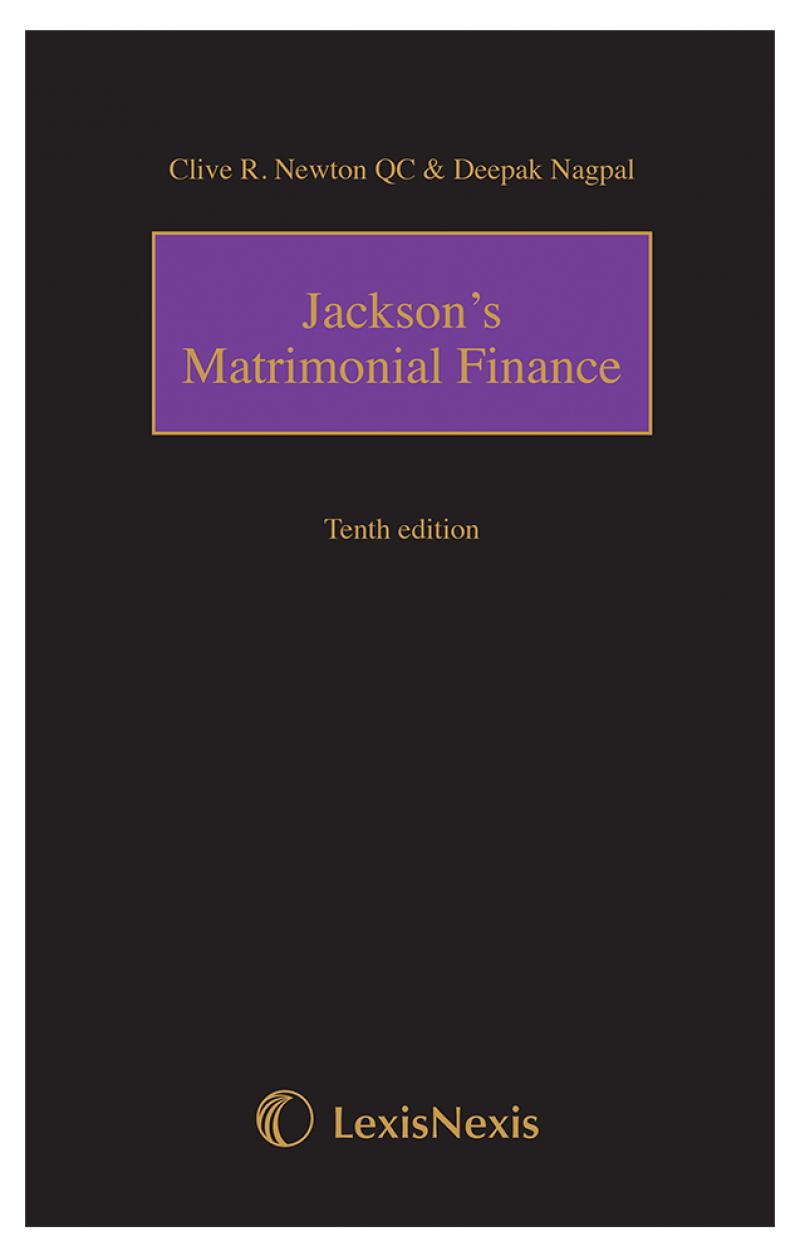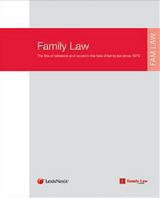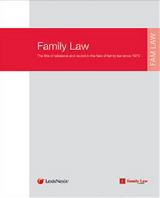- News & Comment
-
Online Shop
Online Services
Looseleafs
Law Reports
Books and eBooks
-
CPD & Events
Webinars
Events
- Authors
- About Family Law
- Contact












 31 MAR 2025
31 MAR 2025

 31 MAR 2025
31 MAR 2025

 31 MAR 2025
31 MAR 2025

 31 MAR 2025
31 MAR 2025

 31 MAR 2025
31 MAR 2025







Third party interventions have been relatively rare in the Chitty, 1834 'The Practice of Law', at 497-498). An early explanation of the practice can be found in Dalrymple v Dalrymple (1811):
‘The principle of the law of intervention is, that if any third person consider that his interest will be affected by a cause which is depending, he is not bound to leave the care of his interest to either of the litigants, but has a right to intervene or be made a party to the cause, and take on himself the defence of his own rights, provided he does not disturb the order of the proceedings.’
Today, little is known about interveners, what they can do and the rules relating to them; provisions for intervention within the rules are also, still, noticeably uneven. Guidance is even more scant with reference to interveners involved in public family law proceedings.
At present,third partyinterventions are governed by The Civil Procedure Rules and The Supreme Court Rules (Part 2, s 15 and Part 3, s 26). A third party to litigation, or intervener, does not have a material interest in the case itself and is not the same as a friend of the court (amicus curiae), or an interested party. A friend of the court is typically a neutral figure invited to assist the court on points of law. Interested parties are directly affected by the case in question and are invited to join the process by either the court, the defendant or the appellant. Intervenerscan though, assist judicialdecision makingby providing the court with information which helps to give a broader economic and social context to the legal issues at hand.
Interventions usually take place in the High Court or Supreme Court, and fall into two categories: those borne out of public interest (because the public has been directly affected by the outcome), and those involving a private interest. While the national media has often highlighted those cases whereintervenershave been joined as parties in the name of public interest, such as human rights cases, there are other types of intervention at play within the Family Court.
Most frequently, family law interveners can be found within ancillary relief proceedings, and seek permission to join a case so that they may assert their interest. Theseintervenermay join proceedings in their own right, attend as a witness for either husband or wife, or play no part at all during the life of the case. The decision to join anintervenerto the proceedings is one that should be made within the early stages of a case and should be reviewed continually as the case unfolds.
The Civil Procedure Rules, Part 19.2(2), allow the court to add a party if it is either desirable, so that the court can resolve matters in dispute or if there is an issue involving both a new and existing party which is connected to those matters. Whether the matter itself warrants intervention is not always clear. A recent case within The Family Court highlights this ambiguity, and the need for greater clarity when it comes tointervenersand the process.
The matter, which was reported by the media in 2012, is an unusual one because it centres around public family law and concerns a private interest intervener, seldom seen in such cases. The matter took an unconventional turn in April of this year, when the intervener, a former medical professional, requested to be joined to the case in order to access documents held by the local authority, a current party to the proceedings. The subsequent communication between the intervener and the presiding judge was deemed invalid – the intervener had not followed procedure. A formal application was then made at the direction of the judge, requesting that the intervener also provide evidence in support of the application in order to ascertain whether such permission should be granted.
The process also requires that such an application be served on all parties to the proceedings, who in turn are then given the opportunity to respond to the application and make submissions to the court. Matters progressed further when theintervenerin the case requested an amendment to the application to intervene, so that further parties could be joined to the case. Multiple interveners are still considered a rarity inthird partyinterventions relating to public interest cases; such a request in a public family law case then, is noteworthy indeed. An issue now arises as to whether the parties will be joined to the case independently, creating a series of joint interventions, or whether one intervention (a singleintervener), representing all parties wishing to intervene is moreappropriate.
The reasons a judge may choose to minimise the number of parties intervening in this case, or in any case, stem from the need to reduce delay and avoid duplication during the proceedings. As interveners usually become involved in proceedings to assist the judge in resolving matters in dispute, what of theintervenerwho wishes solely to be joined so that he or she may access documents for another matter? In this case, the intervener, who sought to make a formal complaint against other medical professionals, asked the court to be joined so that the Council documents in question might be released for the purposes of that complaint.
This case raises interesting questions aboutintervenersin public family law cases. The Civil Procedure Rules allowing for intervention do so within a very narrow remit – the matter in question must be connected to the proceedings. In this case, it might be argued by some of the parties that a request for documents being used within proceedings to facilitate an external complaint, even if the complaint is linked to those proceedings, does not fall within the ambit of the Rules, nor the essence of intervention. And while intervention can be viewed as a positive element in cases where that intervention may enrich the judicialdecision makingprocess, it is perhaps debatable as to whether intervention in this context would do so, as the request does not appear to add to the proceedings in any way.
The court is likely to be concerned by applications which unnecessarily take up valuable court time too, and historically a certain degree of restraint has been demanded of interveners as well as an implicit understanding that their involvement adds something to the proceedings. How the judge in this case will perceive this intervenor’s request for materials in the court bundles is yet to be seen.
There are some truly fascinating, and as of yet unanswered questions in relation to interveners – who are they, how many family law cases involve them and do they distort or clarify judicial process? As a result the law, quite rightly is wary of intervention, for whilstintervenerscan and do offervaluableinput, the courts must be careful that they do not unwittingly become a forum for specialised interests and unreliable evidence.
The views expressed by contributing authors are not necessarily those of Family Law or Jordan Publishing and should not be considered as legal advice.




